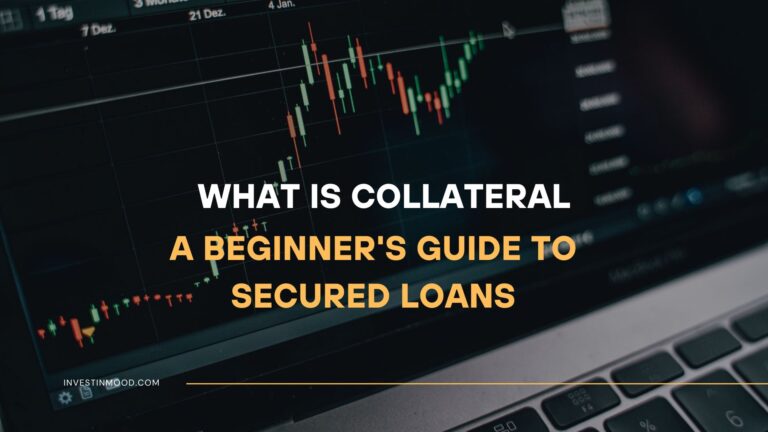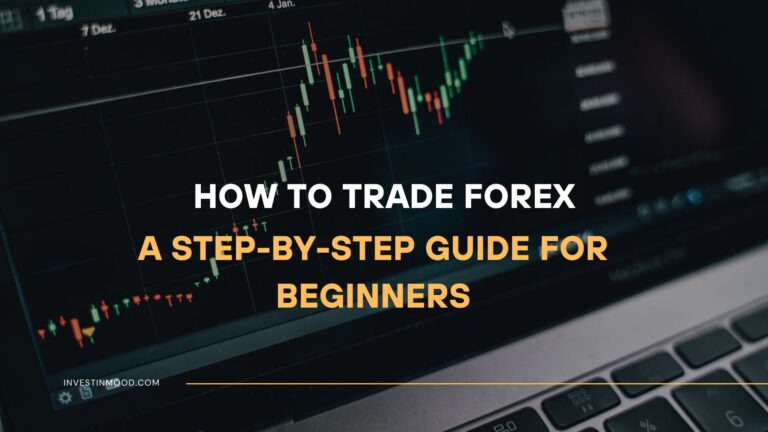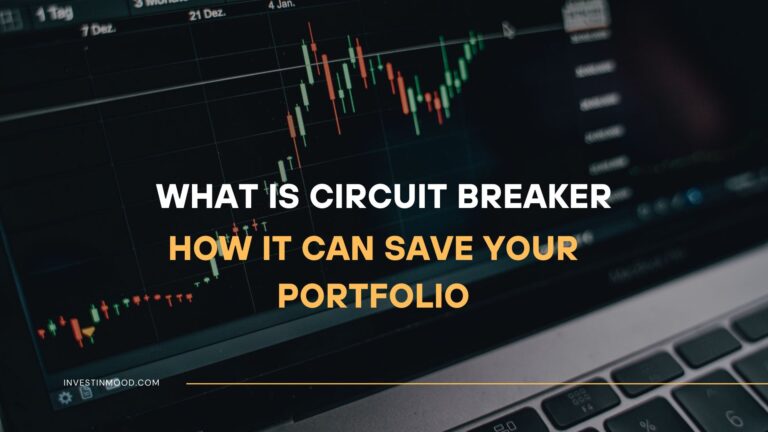
What Are U.S. Treasury Bonds, How Do They Work
U.S. Treasury bonds are debt securities issued by the U.S. government to finance its operations and pay down existing debt. They form the bedrock of the global financial system, representing one of the safest investments available. For investors in the US, UK, Canada, and Australia, understanding “Treasuries” is crucial for building a diversified and resilient portfolio.
Summary Table
| Aspect | Detail |
|---|---|
| Definition | A long-term, interest-bearing debt security issued by the U.S. Department of the Treasury to support government spending. |
| Also Known As | Treasuries, T-Bonds, Government Bonds |
| Main Used In | Portfolio Management, Retirement Planning, Risk-Off Investing, Institutional Asset Allocation |
| Key Takeaway | They are considered a “risk-free” asset, providing a guaranteed return of principal if held to maturity, making them a cornerstone for capital preservation. |
| Related Concepts |
What Are U.S. Treasury Bonds
A U.S. Treasury bond is essentially a loan you make to the U.S. government. When you buy a Treasury bond, you are lending your money to the federal government for a fixed period, typically 20 or 30 years. In return, the government promises to pay you a fixed interest rate (the “coupon”) every six months and return the full face value of the bond (“principal”) when it matures. Think of it as a supersafe, long-term savings certificate issued by the full faith and credit of the United States government.
Key Takeaways
The Core Concept Explained
The core concept of a Treasury bond is time and trust. You are locking away your money for a long period in the safest asset available. The interest rate, or yield, you receive is essentially the “price” of that safety and time. A 30-year bond will typically offer a higher yield than a 10-year Treasury note to compensate you for the additional time your money is tied up. The entire system functions on the global market’s confidence in the U.S. government’s stability. The price of a bond and its yield have an inverse relationship. If you buy a $1,000 bond with a 4% coupon, you get $40 annually. If interest rates jump to 5%, your 4% bond is less attractive. To sell it, you’d have to lower its price below $1,000 so that the $40 annual payment represents a 5% yield for the new buyer.
How U.S. Treasury Bonds Work
While often used as a blanket term, “Treasury bonds” specifically refer to long-term securities with maturities of 20 or 30 years. They are part of a broader family of U.S. government debt, which includes Treasury bills (T-Bills, maturing in one year or less) and Treasury notes (T-Notes, maturing in 2 to 10 years). For investors in the US and internationally, understanding the entire yield curve—from short-term bills to long-term bonds—is key to making informed decisions.
The Components of a Treasury Bond
- Face Value (Par): The amount the bond is worth at maturity, typically $1,000, which is the amount the government agrees to pay back.
- Coupon Rate: The fixed annual interest rate, expressed as a percentage of the face value. A $1,000 bond with a 4% coupon pays $40 per year, or $20 every six months.
- Maturity Date: The specific date on which the bond’s face value is paid to the holder. This can be 20 or 30 years from the issue date.
- Yield: The actual return you earn on the bond. This can differ from the coupon rate if you buy the bond on the secondary market for more or less than its face value. For example, if you buy a $1,000 face-value bond (with a 4% coupon) for $800 on the secondary market, your yield is $40/$800 = 5%.
The Treasury Yield Curve: A Powerful Economic Signal
The yields on Treasury securities across different maturities don’t move in lockstep. When you plot these yields on a graph, you get the “yield curve,” one of the most closely watched indicators in finance.
- Normal Yield Curve: This is the typical shape, upward sloping. It indicates that investors expect a healthy economy with higher growth and inflation in the future, so they demand a higher yield (compensation) for locking up their money for longer periods (e.g., 30 years) compared to shorter periods (e.g., 3 months).
- Inverted Yield Curve: This occurs when short-term yields are higher than long-term yields. It is considered a strong, though not infallible, predictor of an upcoming recession. Why? Because investors, fearing future economic trouble, rush to lock in long-term rates, driving their prices up and yields down. Simultaneously, the Federal Reserve may be raising short-term rates to combat inflation, pushing short-term yields higher.
- Flat Yield Curve: When there is little difference between short and long-term yields. This often signals a transition period, potentially from a normal to an inverted curve, or vice-versa, and indicates economic uncertainty.
Monitoring the yield curve can provide valuable context for your own investment decisions, signaling whether the market expects economic expansion or contraction.
U.S. Treasury Bond Rates and Yields: What Drives Them?
While the “coupon rate” is fixed, the “yield” an investor earns is dynamic and is the true measure of your return. Understanding what determines these rates is key to making smart bond investments.
Key Factors Influencing Treasury Yields:
- Federal Reserve Monetary Policy: This is the most powerful short-term driver. When the Fed raises its federal funds rate (to combat inflation), it directly pushes up yields on short-term T-Bills. This often pulls up yields on longer-term bonds as well, as investors demand higher returns across the board.
- Inflation Expectations: Bond investors are deeply concerned with purchasing power. If the market expects inflation to rise, investors will demand higher yields to compensate for the erosion of their future fixed interest payments. The 10-year Breakeven Inflation Rate, derived from the difference between Treasury yields and TIPS yields, is a key market-based gauge of these expectations.
- Economic Outlook (Growth): In a strong economy, investors favor riskier assets like stocks, leading to selling in the bond market. This selling pressure pushes bond prices down and yields up. Conversely, in a weak economy, the “flight to quality” into bonds pushes prices up and yields down.
- Supply and Demand: The U.S. government’s fiscal deficit influences the supply of new bonds. Larger deficits can mean more bond issuance, which may push yields higher if demand doesn’t keep pace. On the demand side, large institutional buyers like foreign governments (e.g., China, Japan) and pension funds have a massive impact.
- The Term Structure (Time to Maturity): Generally, longer-term bonds offer higher yields to compensate investors for the greater risk of interest rate and inflation changes over a longer period. This relationship is visualized by the yield curve.
How to Find Current Treasury Rates:
- Official Source: The U.S. Treasury Department’s Website provides daily Treasury yield curve rates.
- Financial News: Bloomberg, CNBC, and Reuters display key Treasury rates like the 10-year yield.
- Brokerage Platforms: Your online broker will show real-time yields for bonds you are considering purchasing.
Why U.S. Treasury Bonds Matter to Traders and Investors
- For Investors: They are the ultimate safe-haven asset for capital preservation. Retirees and conservative investors rely on them for a stable, predictable income. They are a core component of a “60/40” portfolio (60% stocks, 40% bonds) to reduce overall volatility.
- For Traders: Bonds are actively traded on the secondary market. Traders speculate on the direction of interest rates by buying bonds when they believe rates will fall (causing bond prices to rise) and selling when they believe rates will rise.
- For Economists and Analysts: The yield on the 10-year Treasury note is a critical economic indicator. It influences mortgage rates, corporate borrowing costs, and is closely watched by the Federal Reserve. An “inverted yield curve” (when short-term rates are higher than long-term rates) is often seen as a precursor to a recession.
How to Use U.S. Treasury Bonds in Your Investment Strategy
- Case 1: The Laddering Strategy for Steady Income: Instead of buying one 30-year bond, you build a “ladder” by purchasing bonds that mature in 5, 10, 15, 20, 25, and 30 years. As each bond matures, you reinvest the principal into a new 30-year bond. This provides regular liquidity and helps average out interest rate risk over time.
- Case 2: The Safe-Haven Flight-to-Quality Move: During periods of stock market panic or economic uncertainty, investors often sell risky assets like stocks and buy Treasury bonds. This “flight to quality” can cause bond prices to rise, offsetting stock losses in a portfolio. Having an allocation to bonds allows you to rebalance by selling appreciated bonds to buy undervalued stocks.
- Case 3: Hedging Against Deflation: Treasury bonds are an excellent hedge against deflation (a general decline in prices). The fixed income payments become more valuable in real terms as the purchasing power of each dollar increases.
To implement a bond laddering strategy, you need access to a platform that makes buying individual bonds straightforward. Compare features and costs in our guide to the Best Online Brokers for Bond Investors.
How to Buy U.S. Treasury Bonds: A Step-by-Step Guide
There are three primary ways to add Treasury bonds to your portfolio. The best method depends on your goals, level of involvement, and fee sensitivity.
TreasuryDirect (The Direct Method)
- How: Create an account at TreasuryDirect.gov. This is the U.S. government’s portal for purchasing securities directly.
- Best For: Buy-and-hold investors who want to purchase new issues at auction with no fees or commissions.Pros: No fees, direct relationship with the government, full range of securities available.
- Cons: The user interface is not as modern as brokerage platforms; selling on the secondary market is more cumbersome.
Through a Brokerage Account (The Secondary Market Method)
- How: Log into your brokerage account (e.g., Fidelity, Vanguard, Charles Schwab) and navigate to the bond trading section. You can search for specific Treasury bonds by maturity date and coupon.
- Best For: Investors who want flexibility to buy and sell existing bonds before maturity and prefer an all-in-one platform.Pros: High liquidity, easy to use alongside other investments, advanced search and screening tools.
- Cons: You may pay a small bid-ask spread (the difference between the buying and selling price) to the broker.
Through ETFs and Mutual Funds (The Fund Method)
- How: Purchase shares of a Treasury Bond ETF like TLT (iShares 20+ Year Treasury Bond ETF) or a mutual fund like VFITX (Vanguard Intermediate-Term Treasury Fund).
- Best For: Investors seeking instant diversification across many bonds without having to pick individual issues.Pros: Professional management, high liquidity, low minimum investment.
- Cons: You don’t own the bonds directly, the fund has an expense ratio (annual fee), and there is no maturity date—the fund’s value will always fluctuate.
How to Invest in U.S. Treasury Bonds: A Step-by-Step Guide
Adding Treasury bonds to your portfolio is straightforward. Here’s a breakdown of the three main methods, helping you choose the right one for your needs.
Method 1: Buying Directly via TreasuryDirect.gov
This is the official platform for purchasing securities directly from the U.S. government.
- Step 1: Create an account on TreasuryDirect.gov. You will need your Social Security Number (or ITIN), email, and a U.S. address.
- Step 2: Link your checking or savings account to fund your purchases.
- Step 3: Navigate to “BuyDirect” and choose the type of security (e.g., “Bond”). You can participate in a new auction or buy a bond on the secondary market (though the latter is less common on this platform).
- Step 4: Specify the amount and submit your order. The funds will be withdrawn from your bank account.
- Best For: Buy-and-hold investors who want new issues with zero fees.
- Pros: No commissions or fees, direct relationship with the government.
- Cons: The interface is dated; selling bonds on the secondary market before maturity is more complex than with a broker.
Method 2: Buying Through a Brokerage Account
This is the most common method for individual investors who already have a brokerage account (e.g., Fidelity, Vanguard, Charles Schwab).
- Step 1: Log into your brokerage account and navigate to the fixed-income or bond trading section.
- Step 2: Use the search tools to filter for “U.S. Treasury” bonds. You can filter by maturity date (e.g., 20-30 years for bonds), and coupon rate.
- Step 3: Analyze the listings. You’ll see the bond’s price (which may be at a premium or discount to its $1,000 face value), its yield to maturity (YTM)—which is your total expected annual return—and its credit rating (always AAA for Treasuries).
- Step 4: Place a trade for the desired quantity. The bond will be added to your portfolio, and interest payments will be deposited as cash.
- Best For: Investors who want flexibility, a modern interface, and the ability to easily buy and sell on the secondary market.
- Pros: High liquidity, powerful research tools, all investments in one place.
- Cons: You may pay a small bid-ask spread (a hidden cost built into the price).
Method 3: Investing Through Treasury Bond ETFs and Mutual Funds
For those who prefer diversification and professional management without picking individual bonds.
- Step 1: In your brokerage account, search for the ticker symbol of a Treasury Bond ETF or mutual fund.
- Long-Term Bond ETF Example: TLT (iShares 20+ Year Treasury Bond ETF)
- Intermediate-Term Fund Example: VFITX (Vanguard Intermediate-Term Treasury Fund)
- Step 2: Research the fund. Look at its expense ratio (the annual fee), its average duration (sensitivity to interest rates), and its holdings.
- Step 3: Buy shares of the fund just as you would a stock.
- Best For: Investors seeking instant diversification across many bonds and easy, stock-like trading.
- Pros: Low minimum investment, automatic diversification, high liquidity.
- Cons: No maturity date or principal guarantee—the share price will fluctuate indefinitely, and you pay an ongoing expense ratio.
Ready to start your bond investment journey? The right platform is crucial. Compare features, costs, and ease of use in our comprehensive guide to the Best Online Brokers for Bond Trading.
- Extremely Low Default Risk Backed by the full faith and credit of the U.S. government.
- Predictable Income Fixed semiannual payments provide financial certainty.
- Portfolio Diversification Often move inversely to stocks, reducing overall portfolio volatility.
- Tax Advantages Interest is exempt from state and local income taxes.
- High Liquidity Can be easily bought or sold on the deep, global secondary market.
- Interest Rate Risk Rising market rates cause the resale value of existing bonds to fall.
- Reinvestment Risk You may be forced to reinvest principal and interest at lower rates in the future.
- Inflation Risk Fixed payments can lose purchasing power over long periods.
- Low Returns The price of safety is a lower yield compared to riskier assets.
- Opportunity Cost Capital is locked away and may miss higher returns elsewhere.
U.S. Treasury Bonds in the Real World: The 2008 Financial Crisis
The 2008 financial crisis is a textbook example of the “flight-to-quality” effect. As the stock market crashed and major institutions like Lehman Brothers failed, panic swept through global markets. Investors desperately sought safety, leading to a massive sell-off in equities and a corresponding surge in demand for U.S. Treasury bonds. This demand caused Treasury prices to skyrocket and their yields to plummet. The yield on the 10-year Treasury note, for instance, fell from around 4% in early 2008 to below 2.5% by the end of the year. Investors who held Treasuries in their portfolios saw significant gains in their bond holdings, which helped cushion the devastating losses from stocks. This event perfectly illustrates the role of Treasuries as a stabilizing ballast in a diversified portfolio during systemic risk events.
Conclusion
Ultimately, understanding U.S. Treasury bonds provides a critical foundation for sound financial planning and risk management. While they offer unparalleled safety from default and a predictable income stream, they are not without their caveats, namely interest rate and inflation risk. By incorporating Treasury bonds into a diversified portfolio—whether through direct purchase, ETFs, or mutual funds—you can achieve a better balance between risk and return, ensuring you have a stable asset to rely on during market downturns. Start by assessing your risk tolerance and investment horizon to determine what allocation to “risk-free” assets makes sense for you.
Ready to put these concepts into action? The right brokerage platform is essential. We’ve meticulously reviewed and ranked the best online brokers for long-term investors to help you get started.
How U.S. Treasury Bonds Relate to Other Concepts
It’s crucial to distinguish Treasury bonds from other common fixed-income securities.
| Feature | U.S. Treasury Bonds | Corporate Bonds |
|---|---|---|
| Issuer | U.S. Federal Government | Private Corporations |
| Default Risk | Virtually None (Risk-Free) | Varies (Investment Grade to Junk) |
| Primary Use | Capital Preservation, Safe Income | Higher Income, Corporate Exposure |
| Yield | Lower | Higher (to compensate for risk) |
| Tax Treatment | Exempt from State/Local Tax | Fully Taxable |
Related Terms
- Treasury Inflation-Protected Securities (TIPS): A type of Treasury security where the principal value is adjusted based on inflation, protecting investors from inflation risk.
- Bond Yield: The return an investor realizes on a bond, calculated as the annual coupon payment divided by the bond’s current market price.
- Yield Curve: A line that plots the interest rates of bonds having equal credit quality but differing maturity dates. The shape of the curve is a powerful economic indicator.
Frequently Asked Questions
Recommended Resources
- The definitive place to buy bonds directly is TreasuryDirect.gov.
- For a deeper dive into bond concepts and market data, Investopedia’s Bond Section is an excellent resource.
- Track current Treasury yields and the yield curve in real-time on the U.S. Treasury Department’s Website.





